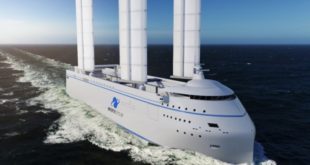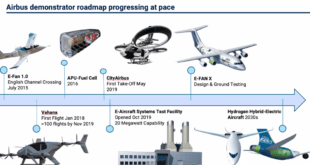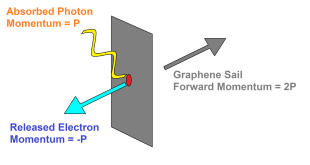Introduction: In the pursuit of clean and renewable energy, scientists worldwide have long sought after efficient energy storage solutions. Superionic conductors promise clean, renewable energy — at the right temperatures. These conductors, used as solid electrolytes in batteries and fuel cells, comprise solid materials in which ions move as fast …
Read More »Advancing Aviation: The Rise of More Electric Aircraft (MEA) and All Electric Aircraft technologies
In recent years, the aviation industry has been undergoing a significant transformation driven by technological advancements and a growing emphasis on sustainability. One of the most promising developments in this regard is the emergence of More Electric Aircraft (MEA) and All Electric Aircraft (AEA). These innovative aircraft designs leverage new …
Read More »Wind ships and Wind Hybrid propulsion cutting fuel costs and emissions of Commercial ships and tankers
Introduction: The shipping industry, vital for global trade, is undergoing a transformation spurred by the imperative to reduce fuel costs and curb emissions. As the world seeks sustainable solutions, wind ships and wind hybrid propulsion systems are emerging as game-changers, offering eco-friendly alternatives that harness the power of the wind …
Read More »The Screaming Scourge: Hypersonic Dual-Mode Ramjets with Rotating Detonation Combustion
In the realm of military technology, the landscape is continually evolving, with advancements pushing the boundaries of speed, maneuverability, and lethality. Among the latest innovations stands the Hypersonic Dual-Mode Ramjet with Rotating Detonation Combustion (HTDV-RDC), a groundbreaking development poised to revolutionize missile capabilities. An RDE is a type of internal …
Read More »Hypersonic Scramjet Propulsion: Revolutionizing Warfare
In the fast-paced world of military technology, the pursuit of hypersonic scramjet propulsion is reaching new heights, promising to redefine warfare and transportation as we know it. With speeds ranging from Mach 5 to 10 Machs, these advanced systems are poised to enable unprecedented capabilities in military operations and civilian …
Read More »Unlocking a Sustainable Future: The Rise of Ammonia-Fuelled Engines
In the quest for a cleaner, greener future, innovative solutions are essential to combatting climate change and reducing carbon emissions. Among the emerging technologies poised to revolutionize the transportation sector is the ammonia-fuelled engine—a promising advancement that offers both environmental benefits and technological prowess. In this article, we delve into …
Read More »Soaring Into the Future: Hydrogen Hybrids Revolutionizing Commercial Aviation
Introduction: The aviation industry, responsible for about 2.5% of global carbon dioxide emissions, is under increasing pressure to transition to more sustainable practices. In this pursuit, hydrogen hybrids are emerging as a promising solution, offering the potential to significantly reduce carbon emissions and propel commercial aviation towards a greener future. …
Read More »Revolutionizing Space Travel: Harnessing Laser Directed Energy Propulsion for Interplanetary Missions
Introduction: The future of space exploration is marked by increasingly ambitious plans to venture deeper into our solar system and beyond. Beyond ongoing initiatives aimed at establishing infrastructure in cis-lunar space and mounting crewed missions to the Moon and Mars, there’s a burgeoning interest in exploring the outer reaches of …
Read More »Igniting the Future: Exploring Detonation-Driven Propulsion
Introduction: In the realm of propulsion systems, traditional combustion methods have long relied on deflagration, a process that involves the relatively slow, subsonic burning of fuel. However, a groundbreaking alternative has emerged in the form of detonation-driven propulsion, which harnesses the power of shock waves to accelerate the oxidation of …
Read More »Harnessing Heat Quietly: The Thermoacoustic Stirling Generator
In the realm of power generation, innovation often lies in the fusion of existing technologies to create something entirely new. One such innovation making waves in the world of energy production is the thermoacoustic Stirling generator. Combining elements of the Stirling engine, linear motor, and thermoacoustic principles, this cutting-edge device …
Read More » International Defense Security & Technology Your trusted Source for News, Research and Analysis
International Defense Security & Technology Your trusted Source for News, Research and Analysis




